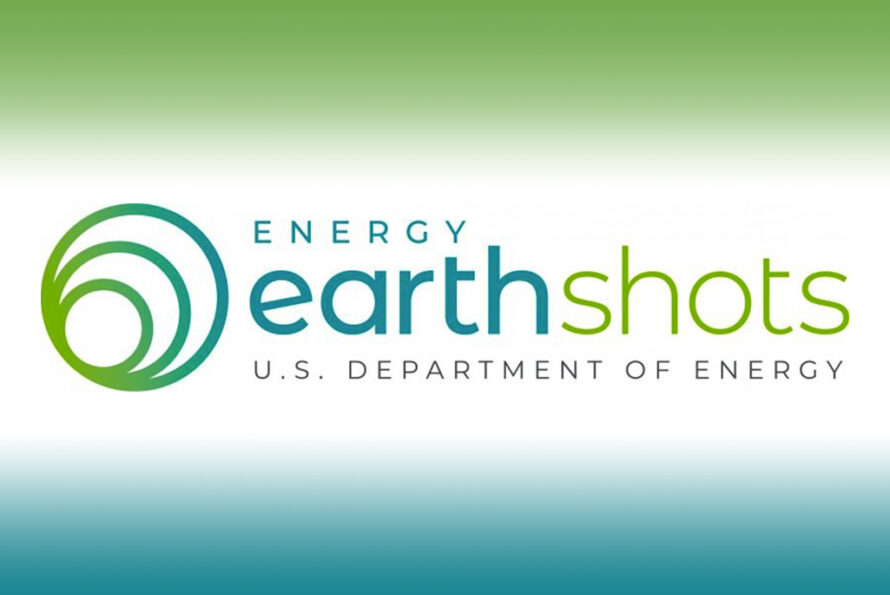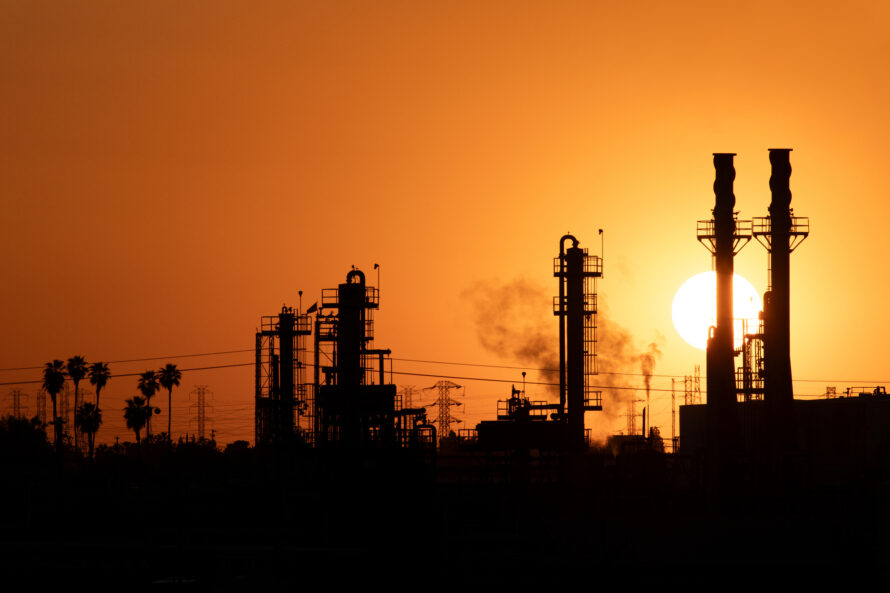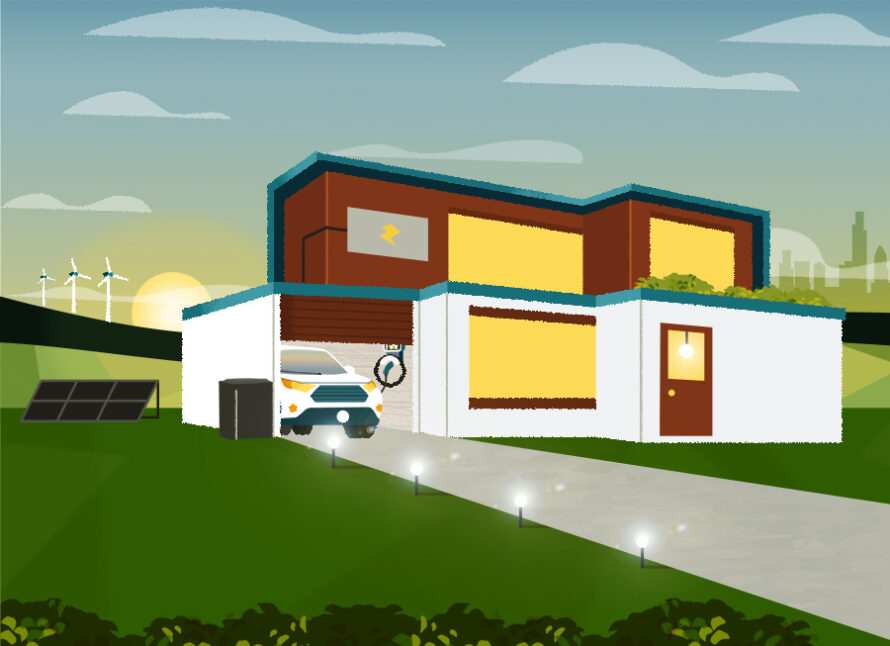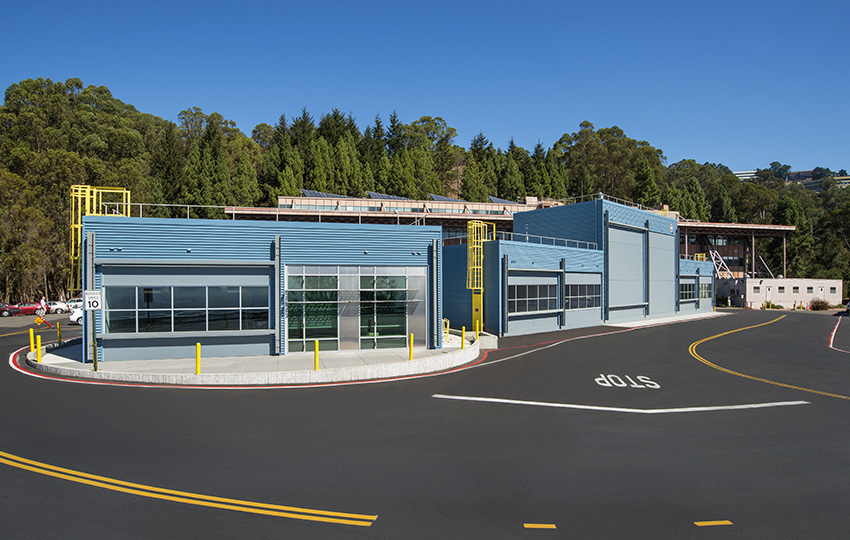Key Takeaways
- Decarbonizing buildings and the grid are key to meeting U.S. goals to achieve zero carbon emissions.
- Demand flexibility in buildings and distributed energy resources can support low-carbon grid operations.
- FLEXLAB® offers real-world testbeds to advance decarbonizing strategies for buildings and the grid.
The United States aims to reach net-zero greenhouse gas emissions economy-wide by 2050. Getting there depends on meeting clean electricity objectives by 2030 and achieving deep energy efficiency and electrification in the buildings sector. These ambitious goals also entail replacing fossil fuels with renewable energy such as wind and solar.
Around 20% of all electricity for the U.S. grid is generated from renewable energy. Even more renewable energy is needed if utilities companies are to achieve zero carbon emissions in support of the nation’s clean energy goals. But how can grid operators ramp up and maintain power to customers with a supply of clean, emissions-free energy when the sun stops shining or the wind stops blowing?
Grid operators could overcome these hurdles to a renewable grid by emphasizing energy efficiency and expanding the adoption of demand-flexibility technologies like smart thermostats, electric water heaters, and batteries. These advances in demand flexibility could enable buildings to self-regulate energy consumption for the mutual support of utilities customers and a clean grid while making the best use of clean renewable energy when it is available.
For many years, researchers from the buildings and utilities sectors as well as policymakers have been working side by side with researchers at the Department of Energy’s FLEXLAB® Facility, a zero carbon and demand-flexibility buildings testbed at Lawrence Berkeley National Laboratory (Berkeley Lab), to evaluate strategies and develop new technologies for a zero-carbon future.
“FLEXLAB is uniquely qualified to help the nation advance its clean energy goals,” said Cindy Regnier, FLEXLAB’s executive director. “Our facility studies a full ecosystem of building technologies – from demand flexibility to zero-carbon retrofits and distributed energy resources – under real-world operating conditions.”
“FLEXLAB is uniquely qualified to help the nation advance its clean energy goals.”
– Cindy Regnier, FLEXLAB executive director
FLEXLAB research is also on track to help California meet its 7 gigawatt “load shift” goal by 2030, which the California Energy Commission announced in May. That goal could enable a flexible energy system that can better deliver electricity and clean energy to customers, manage grid conditions, and help customers save money in utility bills.
Here are three ways FLEXLAB is supporting the decarbonization of the U.S. grid, communities, and buildings:
Enabling equitable access to building electrification
Business owners of small office spaces face greater burdens in identifying cost-effective retrofit solutions because they typically lack the capital needed to afford the cost of an energy-consulting service. What’s more, energy-consulting fees for large commercial buildings (more than 50,000 square feet) can be offset by their larger potential for energy cost savings, but small office spaces don’t have the same benefit.
“Enabling equitable access to energy-saving retrofit information across all sectors is important in meeting zero carbon goals at the state and national level,” Regnier said.
In a recent project funded by the California Energy Commission, FLEXLAB researchers developed and demonstrated an identification tool for cost-effective electrification retrofits tailored for small commercial buildings.
“FLEXLAB helps to provide solutions for under-resourced buildings that industry can rely on,” said Regnier, who led the project. “Our work aims to enable equitable access to energy analysis and the identification of net zero energy retrofit strategies for small commercial offices.”
For the project, Regnier and team developed CBES (Commercial Building Energy Saver), a free online tool that provides retrofit recommendations and calculates retrofit energy savings and costs for small- to medium-sized office and retail buildings in California and other regions of the United States.
“With the free CBES tool, a small business owner doesn’t have to worry about having to hire an energy consultant,” said Regnier.
CBES can estimate savings in energy costs from building improvements such as window upgrades, lighting retrofits, and the replacement of natural gas furnaces with heat pumps. Unlike air conditioners or furnaces, heat pumps can serve as either a heating device that releases heat into a building – or as a cooling device that absorbs heat. CBES also allows users to assess how energy generated by a solar panel installation over the course of a year could provide further energy cost savings.
After validating the CBES retrofit recommendations for energy savings and building occupant comfort at FLEXLAB, the research team then implemented most of the recommendations in an energy retrofit of a mental health services building. The researchers found that the selected retrofit package also resulted in a net zero carbon building.
“This was a side benefit of the heat pump retrofit. Heat pumps are not only a good choice for energy efficiency reasons but they also support deeper carbon reduction,” Regnier said.
The data also showed that the solar panel installation enabled the building to generate more energy than it consumed.
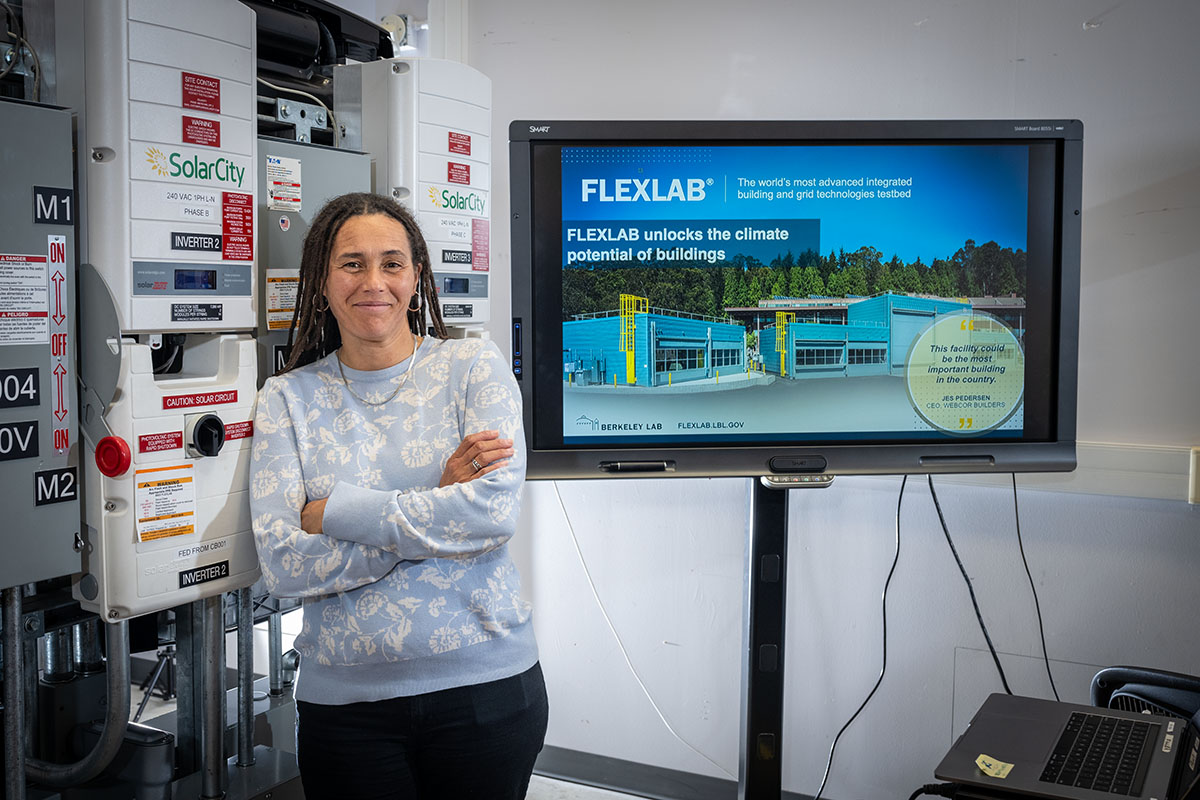
Advancing distributed energy resources to support clean grid operations and lower energy bills
Distributed energy resources (DERs) such as rooftop solar panels and backup energy storage can lower energy bills while providing other benefits such as providing some backup power supply during power outages. DERs are also key strategies to increasing grid reliability and reducing carbon emissions.
A Berkeley Lab research team led by Jessica Granderson and Marco Pritoni has developed a machine learning algorithm that could enable a building to dynamically control multiple DERs. The method could enhance energy savings for customers while supporting the grid.
The new algorithm, which is based on a machine learning method called deep reinforcement learning (DRL), is designed to automatically adjust building load (a building’s electricity consumption) for optimal energy efficiency and demand flexibility.
To test the DRL-based algorithm, the researchers set up two identical experimental rooms at FLEXLAB to represent a small office space with a large south-facing window. The experiments showed that the DRL-based algorithm can produce cost savings of up to 40% as compared to the conventional algorithm while maintaining similar thermal comfort in the building.
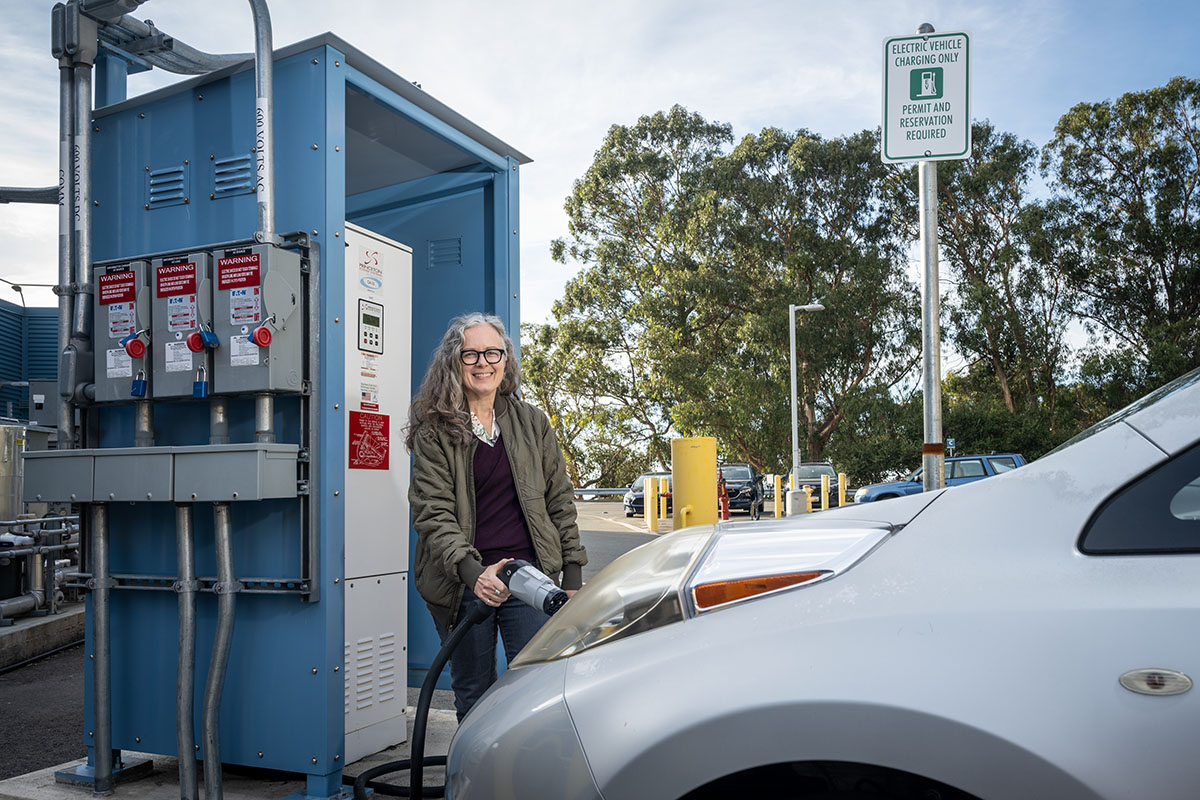
Empowering communities and the grid through electric vehicle charging
The United States aims to make half of all new cars sold in 2030 zero-emissions vehicles, including battery electric, plug-in hybrid electric, or fuel cell electric vehicles (EVs). In California, all new cars must be zero-emission vehicles beginning in 2035.
To advance these goals, FLEXLAB is studying how EVs can be used as a clean energy resource that also provides resiliency and demand flexibility benefits to customers and the grid.
“How do we make it economical for the customer to provide power to the grid? FLEXLAB is uniquely equipped to help researchers answer this question,” said Regnier.
With FLEXLAB’s bi-directional charger, researchers can charge EVs with electricity supplied from the grid or from solar energy when it’s available. “Bi-directional charging also allows us to use the car’s battery to provide power back to the building or even to the grid, supporting clean low-carbon grid operations,” she added. “Using an EV battery to power a building or home can provide great resilience benefits in the event of a power outage as well.”
Since the 1970s, Berkeley Lab has been a world leader in advancing energy-efficiency breakthroughs across the building, appliance, water, and transportation sectors. Today, Berkeley Lab continues to partner with the Department of Energy, the California Energy Commission, industry stakeholders, and community organizations to bring decarbonization solutions to the world.
This work was supported by the DOE Office of Energy Efficiency and Renewable Energy.
###
Lawrence Berkeley National Laboratory (Berkeley Lab) is committed to delivering solutions for humankind through research in clean energy, a healthy planet, and discovery science. Founded in 1931 on the belief that the biggest problems are best addressed by teams, Berkeley Lab and its scientists have been recognized with 16 Nobel Prizes. Researchers from around the world rely on the Lab’s world-class scientific facilities for their own pioneering research. Berkeley Lab is a multiprogram national laboratory managed by the University of California for the U.S. Department of Energy’s Office of Science.
DOE’s Office of Science is the single largest supporter of basic research in the physical sciences in the United States, and is working to address some of the most pressing challenges of our time. For more information, please visit energy.gov/science.
